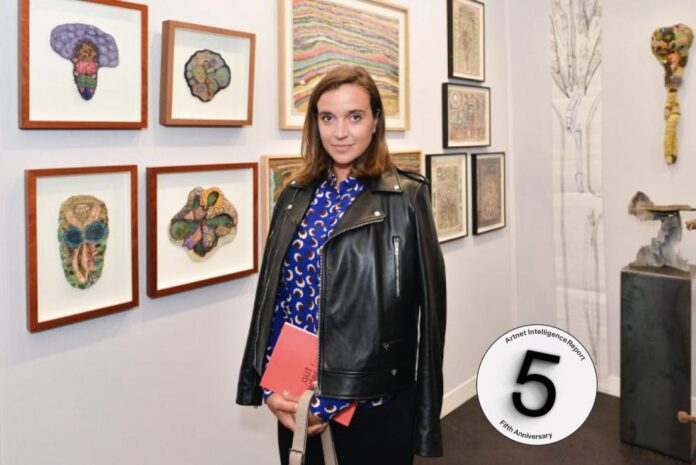What words would you use to describe the postwar and contemporary art market’s performance so far this year?
First, revelatory. The frothiness of the sales during COVID, low interest rates, and available cash disguised the truth in the market. Now we’re seeing a leveling of the playing field, where speculative or artificial markets have been exposed. Second, stubborn. People have become extremely price sensitive and choosy. Typically, someone makes an offer, you counteroffer, and you meet in the middle. But these days, people have their number, whether they’re the seller or buyer, and they stick to it.
What do the top-line auction numbers not tell us about what’s going on in the market?
They completely ignore the primary market prices. There is good, heavy demand to buy primary. There seems to be a lot more confidence there. Because of these really crazy, meteoric price increases at auction, dealers have been able to raise prices very quickly. And so, when these auction prices dictate taste, it becomes a little scary.
What region are you paying more attention to this year than last?
The American Mid-Atlantic and the South. There are people in North Carolina and South Carolina who are becoming much more interested in contemporary art. You have the tech community going to South Carolina, where Beeple is opening his museum, and the banking community in North Carolina. I wonder if it’s going to be the next Dallas. The Bechtler Museum of Modern Art in Charlotte recently had a show “Pop to Now: Warhol and His Legacy” with works by Warhol, Basquiat, and Keith Haring. It was a huge blockbuster.
What has been the most surprising market moment so far this year?
The sell-through rates of the spring New York sales were very surprising to me in the face of the debt ceiling issues and continued war in Ukraine. You can see the truth in the day sales, where there was good depth of bidding and response from collectors, especially in the lower price points. The day sales dragged on for hours. It was especially surprising because things above $1 million are essentially not moving at all in the private market.
What are clients asking you to track down most frequently right now? What do they want that nobody can get their hands on?
There’s still a lot of interest in Surrealism. Everyone is looking for women of Abstract Expressionism: Elaine de Kooning, Lee Krasner, Joan Mitchell. Maybe because it’s my expertise, but I get messages about that every day from auction houses and private dealers. But a lot of the best works have already been picked off by savvy buyers, who probably are not selling any time soon.

A painting by Richard Estes, a photorealist garnering market buzz, in the 2022 exhibition “Hyperrealism in the Thyssen-Bornemisza Collection” in Madrid. Photo by Atilano Garcia/SOPA Images/LightRocket via Getty Images.
What other trends should we be paying attention to?
I am seeing interest in American modernism and realism: exceptionally detailed, well-made, and soulful paintings of American life, including landscapes and portraiture. It may be in reaction to much of the abstract work by younger artists that has become increasingly popular and in my view has started to look all the same! There is definitely a formula in the air for many of these new artists rising in popularity, and they won’t all stand the test of time. With institutions mounting blockbuster shows like Edward Hopper at the Whitney and increasingly strong results for Georgia O’Keeffe at auction, these artists have created a growing interest in precisionism and realism. We are continuing to see record prices for artists like Barkley Hendricks and Alice Neel and new records for photorealists like Richard Estes. Galleries are showing previously under-recognized artists from an earlier vintage, like Hughie Lee-Smith, Winfred Rembert, and Bob Thompson. That might dictate other new discoveries and inspire the work of younger artists in the coming years.


























